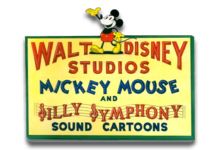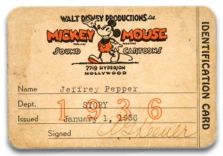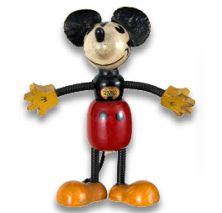 Disney legend and comic book artist-writer Carl Barks is well known for his deft storytelling and often times sharp wit, and these qualities are certainly evident in the various Christmas-themed tales he put to paper over his long and prolific career. But it is also interesting to note that the Duckman never really succumbed to infusing excessive holiday spirit into these efforts, and more often than not, his tales of Christmas seemed more prone to cynicism than sentimentality. However, Barks' very first four color Christmas story, "Donald Duck's Best Christmas," does touch on themes of kindness and unconditional giving that even the bluster and self serving qualities of its title character can't completely overshadow.
Disney legend and comic book artist-writer Carl Barks is well known for his deft storytelling and often times sharp wit, and these qualities are certainly evident in the various Christmas-themed tales he put to paper over his long and prolific career. But it is also interesting to note that the Duckman never really succumbed to infusing excessive holiday spirit into these efforts, and more often than not, his tales of Christmas seemed more prone to cynicism than sentimentality. However, Barks' very first four color Christmas story, "Donald Duck's Best Christmas," does touch on themes of kindness and unconditional giving that even the bluster and self serving qualities of its title character can't completely overshadow.Donald and his nephews anticipate their best Christmas ever; they're heading to Grandma's house via horse and sleigh, bringing presents and the Christmas turkey and singing festive carols along the way. But a curmudgeonly farmer and bad weather soon impede their travels. When Donald is nearly frozen by a plunge into icy waters, they are forced to seek shelter with a destitute family in a remote cabin. Without any thought at all, the mother and her two children quickly offer what little they have--the warmth of the fire and the last of their hot milk--to aid in Donald's recovery. Not surprisingly, Donald can only focus on his own troubles and fails to recognize the hardship that surrounds him, or even acknowledge the sincerity and selflessness of those who have come to his aid.
 It falls to Huey, Dewey and Louie to act collectively as the story's moral center and good conscience, roles they typically play in so many of Barks' efforts. For when the ducks give up their trek to Grandma's and sadly turn back for home, the boys reveal to their uncle that they have in fact given away the presents and the holiday bird to the needy family. While Donald is surprisingly non-plussed by the revelation, he still remains relatively true to self by being seemingly unimpressed by his nephews' kind and genuine gesture. His self-centered, final panel proclamation gives credence to the theory that Barks' parting words in holiday tales tended to be jaded and cynical ones.
It falls to Huey, Dewey and Louie to act collectively as the story's moral center and good conscience, roles they typically play in so many of Barks' efforts. For when the ducks give up their trek to Grandma's and sadly turn back for home, the boys reveal to their uncle that they have in fact given away the presents and the holiday bird to the needy family. While Donald is surprisingly non-plussed by the revelation, he still remains relatively true to self by being seemingly unimpressed by his nephews' kind and genuine gesture. His self-centered, final panel proclamation gives credence to the theory that Barks' parting words in holiday tales tended to be jaded and cynical ones. It was an odd dynamic and one that Barks scholar Geoffrey Blum commented on in a collection of Barks Christmas stories published by Gladstone Comics back in the late 1980s. Blum noted of Donald, " . . . if anything, the story has proven him eminently fallible. By giving Donald the last word, however, Barks managed to soften what would otherwise have been an unbearably preachy ending. It's the first in a long line of ambiguous morals, a device at which the artist became quite proficient. As a purveyor of wholesome entertainment for children, he could seldom finish up with a snarl, yet he was equally determined not to end on a syrupy note. Best to conclude with a question mark."
It was an odd dynamic and one that Barks scholar Geoffrey Blum commented on in a collection of Barks Christmas stories published by Gladstone Comics back in the late 1980s. Blum noted of Donald, " . . . if anything, the story has proven him eminently fallible. By giving Donald the last word, however, Barks managed to soften what would otherwise have been an unbearably preachy ending. It's the first in a long line of ambiguous morals, a device at which the artist became quite proficient. As a purveyor of wholesome entertainment for children, he could seldom finish up with a snarl, yet he was equally determined not to end on a syrupy note. Best to conclude with a question mark."Whether or not Carl Barks was a Christmas curmudgeon is certainly open for debate. Stories such as "Letter to Santa" and "You Might Guess" were almost totally void of sentiment, but in "Donald Duck's Best Christmas," and his most famous holiday story "A Christmas for Shacktown," even the Duckman allowed a little warmth of heart to emerge from some of the panels contained within those efforts. And that, in and of itself, is a small testament to spirit of the holiday season.




















